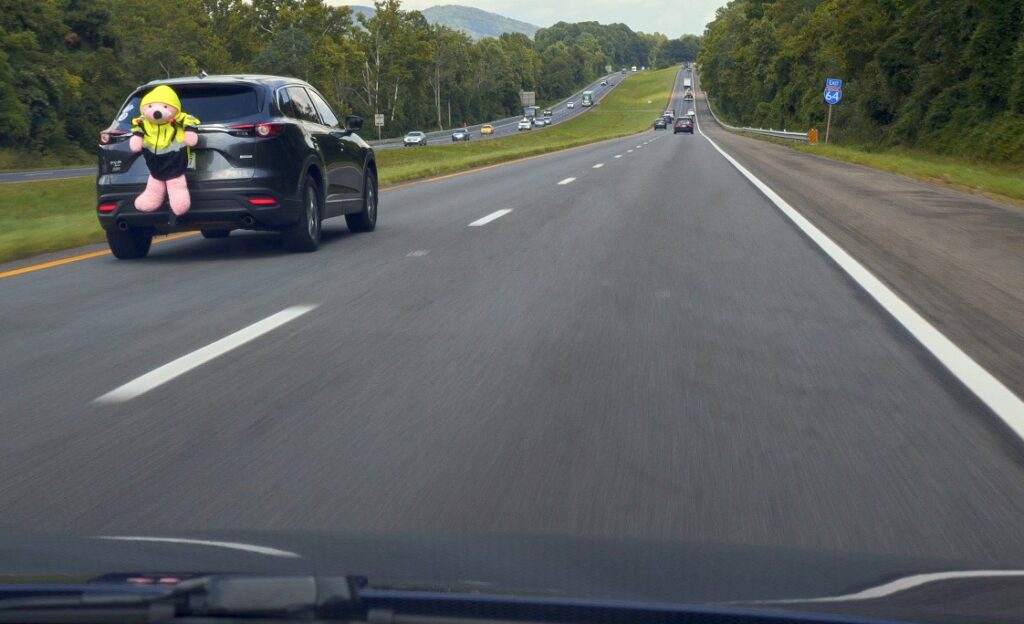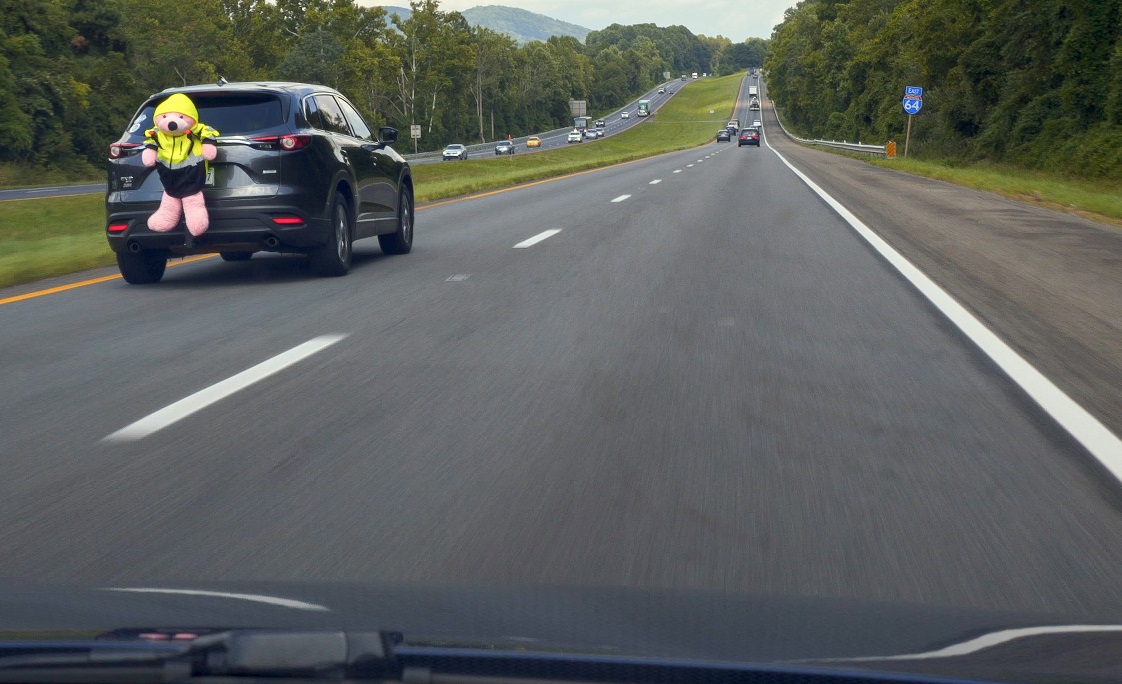
One of the most fascinating problems about developing automatic driving technologies is not just the technology itself but how humans adapt to the technologies. Yesterday, I was waiting to take a left in Hillsboro and changing the radio . . . oh, wait, that’s old tech!. . . Pink teddy bear?
This study experimented with tracking the awareness of drivers when certain automatic (L2) systems are in place to help drive the car. In a nutshell, participants drove for an hour in a car equipped with L2 systems (lane monitoring, adaptive cruise, etc) as well as cameras that monitored the driver’s gaze. The pink teddy bear?
While the participant was driving along, another study vehicle passed the car with the giant pink teddy bear strapped to the back of another car. They did this pass three times over the course of the drive.
Afterwards, participants were asked a series of questions about landmarks and observations to gauge awareness, and those who were more familiar with the L2 systems tended to show greater situational awareness.
In all, I’d say this study goes in the nice-try and fun category. Major problems with the study would be that the 31 drivers were not equally familiar with driving the study car or its systems before participating. Additionally, different familiarities with the area could affect recall as well.
Perhaps this is why this study ends, like most, with the firm conclusion that it “demonstrates the need for future research” (p 22).
This continues a cycle that has been going on since time immemorial. We develop driving technologies that promise to help solve a problem. In turn, those technologies also create a new environment that itself calls for further testing. Car insurance companies have an obvious interest in understanding the effects of these driving tools.
Here’s a link to the full paper.

